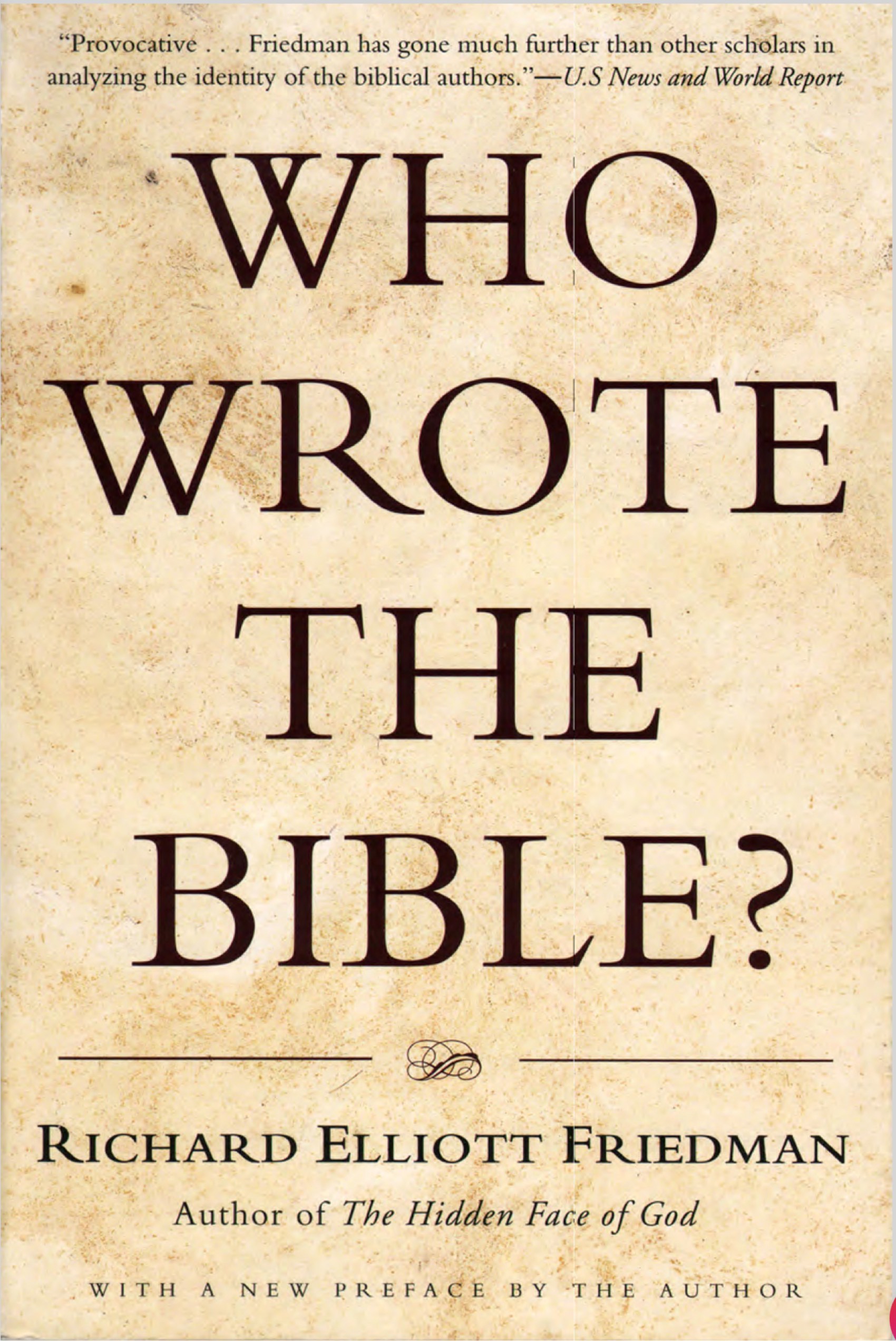WHO WROTE THE BIBLE
Summary of Who Wrote the Bible? by Richard Elliott Friedman
Richard Elliott Friedman’s Who Wrote the Bible? explores the origins of the Hebrew Bible (Old Testament), particularly the first five books—Genesis, Exodus, Leviticus, Numbers, and Deuteronomy—traditionally attributed to Moses. The book presents a compelling analysis of biblical authorship using historical and linguistic evidence.
Key Themes and Content
1. The Documentary Hypothesis
• The Pentateuch (Torah) was written by multiple authors over centuries.
• Scholars identified four main sources:
• J (Yahwist) – Uses Yahweh as God’s name; focuses on human-like depictions of God.
• E (Elohist) – Uses Elohim for God; emphasizes morality and fear of God.
• D (Deuteronomist) – Mainly in Deuteronomy; focuses on religious reforms.
• P (Priestly) – Ritual laws, genealogies, and structured texts.
2. Historical and Political Context
• The Bible was shaped by the divided Kingdom of Israel (Northern) and Judah (Southern).
• Priestly and royal influences affected how religious texts were compiled.
• The Babylonian exile (6th century BCE) played a major role in the final composition.
3. Evidence of Multiple Authors
• Doublets (two versions of the same story) indicate different sources, such as:
• Two creation stories in Genesis (Genesis 1 vs. Genesis 2).
• Two versions of the Ten Commandments.
• Contradictions in law and narrative styles suggest varied authorship over time.
4. The Role of Editors and Redactors
• A final editor (or redactor) combined the texts, preserving contradictions rather than rewriting them.
• The Bible evolved as different groups sought to preserve their traditions and theology.
5. Impact on Religious Thought
• The book challenges traditional views of divine authorship but highlights the Bible’s literary and historical richness.
• The biblical narrative reflects human efforts to understand God, justice, and morality across generations.
Conclusion
Friedman’s work provides a scholarly yet accessible explanation of how the Bible was written, combining historical analysis with theological insight. The book argues that understanding its authorship enhances, rather than diminishes, its significance.
